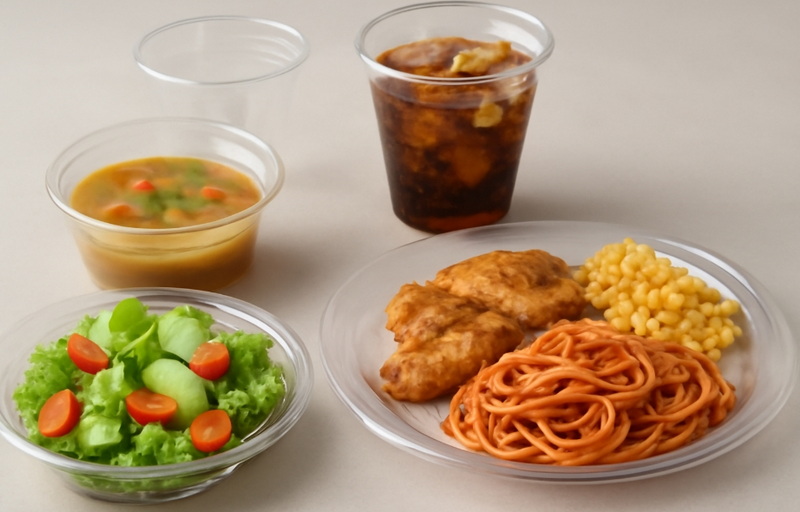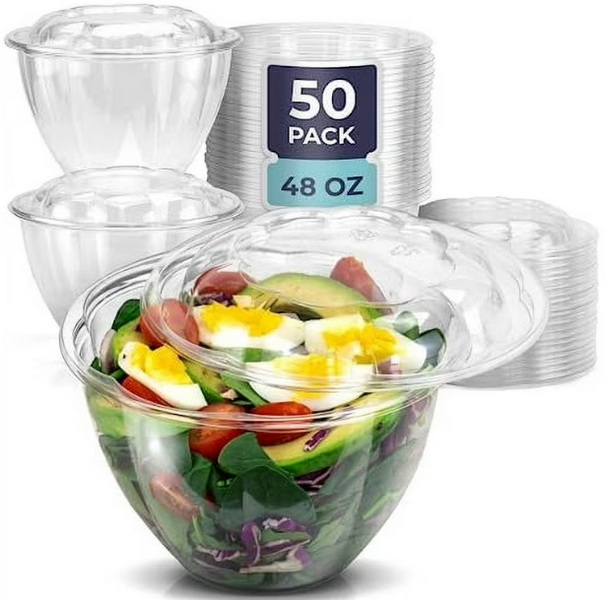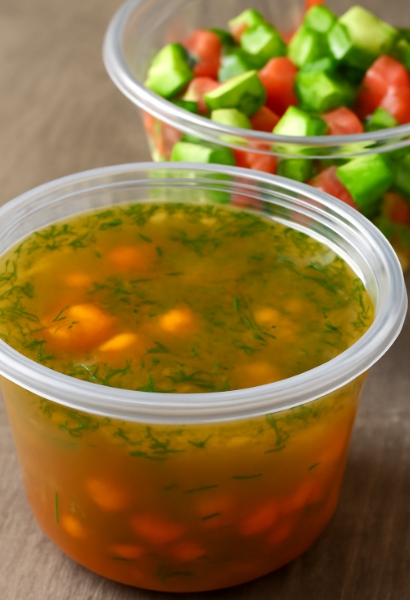
Content Menu
● Understanding Clear Disposable Tableware
>> Common Types of Clear Disposable Tableware
● Materials Used in Clear Disposable Tableware
>> Polyethylene Terephthalate (PET)
>> Polystyrene (PS)
>> Polypropylene (PP)
● Safety of Clear Disposable Tableware for Hot Foods
>> Chemical Leaching Concerns
>> Durability and Structural Integrity
● Safety of Clear Disposable Tableware for Cold Foods
>> Key Benefits for Cold Foods
● Food-Grade Certification and Labeling
● Best Practices for Using Clear Disposable Tableware
>> For Hot Foods
>> For Cold Foods
>> General Hygiene and Safety Tips
● Environmental Considerations
● Alternatives to Clear Disposable Tableware
● Conclusion
● FAQs About Clear Disposable Tableware
>> 1. Can I use clear disposable tableware in the microwave?
>> 2. Is clear disposable tableware safe for children?
>> 3. Can I reuse clear disposable tableware?
>> 4. Are there eco-friendly clear disposable tableware options?
>> 5. What should I do if clear disposable tableware becomes deformed after serving hot food?
Clear disposable tableware has become a staple in modern dining, from casual picnics to formal events. Its sleek, transparent look, lightweight nature, and convenience make it a popular choice for serving both hot and cold foods. However, as consumers become more health- and environmentally-conscious, questions arise about the safety and suitability of clear disposable tableware for various food temperatures. This comprehensive guide explores the materials, safety considerations, best practices, and frequently asked questions surrounding the use of clear disposable tableware for hot and cold foods.

Understanding Clear Disposable Tableware
Clear disposable tableware typically refers to single-use plates, cups, bowls, and utensils made from transparent plastics such as PET (polyethylene terephthalate), PS (polystyrene), or PP (polypropylene). These products are designed for convenience, offering a modern aesthetic and eliminating the need for washing up.
Common Types of Clear Disposable Tableware
- Clear plastic cups (often used for beverages)
- Transparent plates and bowls
- Disposable cutlery (forks, knives, spoons)
- Lids for takeout containers
Each of these items may be manufactured from different plastic resins, each with unique properties affecting their safety and performance with hot or cold foods.
Materials Used in Clear Disposable Tableware
Polyethylene Terephthalate (PET)
PET is widely used for cold drink cups and salad containers. It is lightweight, shatter-resistant, and provides a clear, glass-like appearance. However, PET is generally not recommended for hot foods, as it can deform and potentially leach chemicals at higher temperatures.
Polystyrene (PS)
Polystyrene is another common material for clear disposable tableware. While it offers good clarity and rigidity, it is best suited for cold or room-temperature foods. Exposure to heat can cause polystyrene to soften, warp, and potentially release styrene, a chemical of health concern if ingested in significant amounts.
Polypropylene (PP)
Polypropylene is more heat-resistant than PET or PS, making it suitable for both hot and cold foods. Some clear disposable tableware made from PP can withstand microwave heating and exposure to boiling liquids without deforming or leaching harmful substances.
Safety of Clear Disposable Tableware for Hot Foods
Chemical Leaching Concerns
When clear disposable tableware is exposed to high temperatures-such as hot soups, stews, or beverages-there is a risk of chemical migration from the plastic into the food. The extent of this risk depends largely on the type of plastic used and whether the product is labeled as food-grade and heat-resistant.
- PET and PS: Not recommended for hot foods. These plastics can warp and may release chemicals when exposed to heat, especially at high temperatures. Using them for hot foods or drinks can compromise both safety and structural integrity.
- PP (Polypropylene): Designed to withstand higher temperatures. Some clear disposable cups and plates made from PP are microwave-safe and can hold hot foods and beverages safely, provided they are clearly labeled as such.
Durability and Structural Integrity
Hot foods can cause certain plastics to warp, become brittle, or even melt. This not only poses a risk of burns and spills but also increases the likelihood of ingesting microplastics or chemical residues. Always check the manufacturer's temperature guidelines before using clear disposable tableware for hot foods.
Safety of Clear Disposable Tableware for Cold Foods
Clear disposable tableware is generally safe and effective for serving cold foods and beverages. PET and PS plastics maintain their shape and clarity at low temperatures, making them ideal for salads, desserts, cold drinks, and snacks.
Key Benefits for Cold Foods
- Maintains structural integrity and appearance
- No significant risk of chemical leaching at low temperatures
- Lightweight and convenient for large gatherings

Food-Grade Certification and Labeling
When selecting clear disposable tableware, look for products marked as "food-grade" or "BPA-free." These certifications indicate that the materials have been tested and approved for safe contact with food under specified conditions.
- Food-grade plastics: Rigorously tested to ensure they do not release harmful substances during normal use.
- BPA-free: Indicates the absence of bisphenol A, a chemical sometimes found in plastics that has raised health concerns.
Best Practices for Using Clear Disposable Tableware
For Hot Foods
- Use only products specifically labeled as heat-resistant or microwave-safe.
- Avoid pouring boiling liquids directly into clear plastic cups or bowls unless the manufacturer confirms they can withstand high temperatures.
- Do not use standard PET or PS clear disposable tableware in microwaves or ovens.
- For hot foods, consider alternatives such as polypropylene-based clear tableware, coated paper, or compostable materials designed for heat resistance.
For Cold Foods
- All types of clear disposable tableware are generally safe for cold applications.
- For dense or heavy foods, choose sturdier, thicker designs to prevent bending or breaking.
- Avoid overloading plates or bowls to maintain stability.
General Hygiene and Safety Tips
- Inspect tableware for defects such as cracks or black spots before use.
- Practice good hand hygiene before handling disposable tableware.
- Dispose of single-use items promptly after use to prevent bacterial growth and contamination.
Environmental Considerations
Clear disposable tableware, especially those made from traditional plastics, contributes to environmental waste if not properly recycled. Some products are recyclable, while others are designed to be compostable or biodegradable.
- Recyclable plastics: Check local recycling guidelines for accepted types.
- Compostable options: PLA (polylactic acid) and other bioplastics are suitable for cold foods but may not withstand high temperatures.
- Proper disposal: Place used items in appropriate recycling or compost bins to minimize environmental impact.
Alternatives to Clear Disposable Tableware
For those seeking safer or more sustainable options, consider:
- Wooden or bamboo disposable tableware: Safe for hot and cold foods, biodegradable, and sturdy.
- Coated paper plates: Suitable for cold or moderately hot foods, but check for food-safe coatings and avoid microwaving unless labeled safe.
- Reusable glass, ceramic, or stainless steel: Best for minimizing waste and exposure to chemicals.
Conclusion
Clear disposable tableware offers undeniable convenience and visual appeal for serving both hot and cold foods. However, safety depends heavily on the type of plastic used and the intended temperature range. For cold foods, most clear disposable tableware is safe and effective. For hot foods, it is crucial to select products specifically designed to withstand heat, such as those made from heat-resistant polypropylene. Always check for food-grade certifications, follow manufacturer guidelines, and consider environmentally friendly alternatives when possible. By making informed choices, you can enjoy the benefits of clear disposable tableware while prioritizing health and sustainability.

FAQs About Clear Disposable Tableware
1. Can I use clear disposable tableware in the microwave?
Most clear disposable tableware made from PET or PS is not microwave-safe and may warp or release chemicals when heated. Only use products labeled as microwave-safe, typically made from polypropylene, for reheating or serving hot foods.
2. Is clear disposable tableware safe for children?
When used as intended (for cold or room-temperature foods), clear disposable tableware is generally safe for children. For hot foods, ensure the tableware is made from heat-resistant, food-grade materials to prevent burns or chemical exposure.
3. Can I reuse clear disposable tableware?
Some higher-quality clear disposable tableware can be gently washed and reused for light snacks or drinks. However, repeated use may degrade the material, especially after exposure to heat or heavy foods. For safety and hygiene, limit reuse and always inspect for cracks or damage before reusing.
4. Are there eco-friendly clear disposable tableware options?
Yes, some manufacturers offer clear disposable tableware made from recyclable or compostable materials such as PLA or recycled plastics. These options are better for the environment but may have limitations regarding heat resistance. Always check product labels for compostability or recyclability.
5. What should I do if clear disposable tableware becomes deformed after serving hot food?
If your clear disposable tableware warps or becomes misshapen after exposure to hot food, discontinue use immediately. Consuming food from deformed plastics increases the risk of ingesting harmful chemicals or microplastics. Switch to heat-resistant alternatives for hot foods.

















